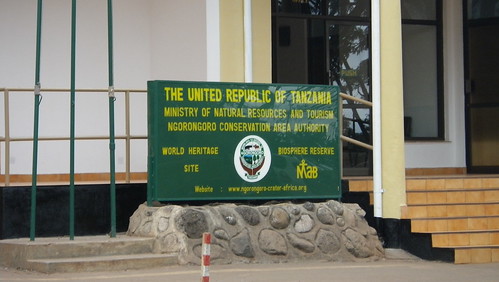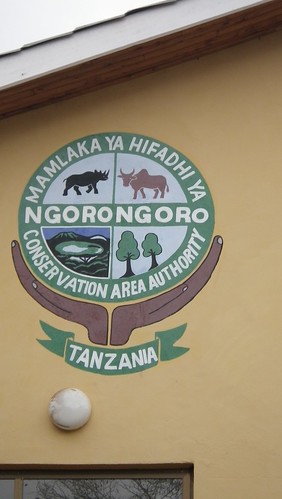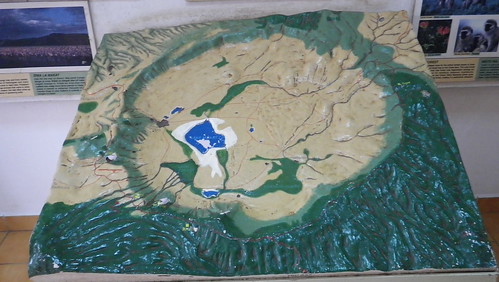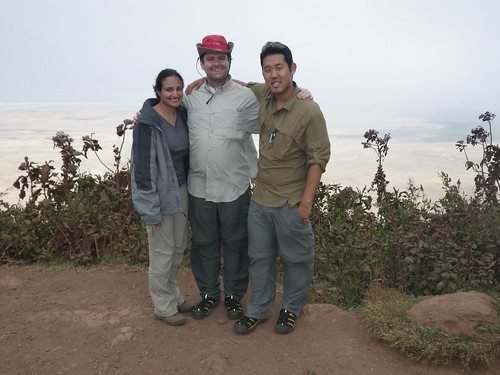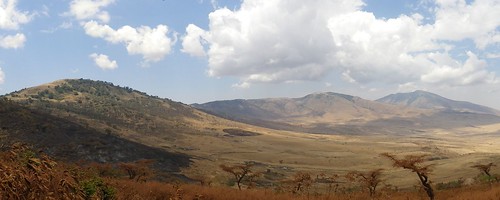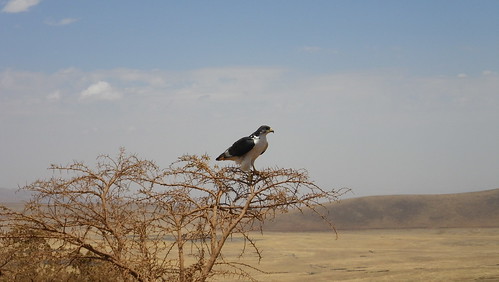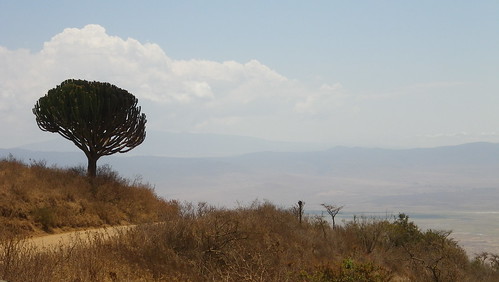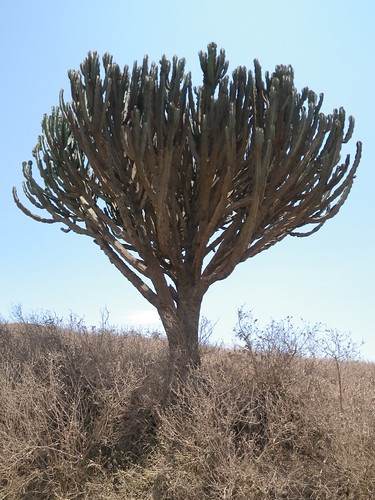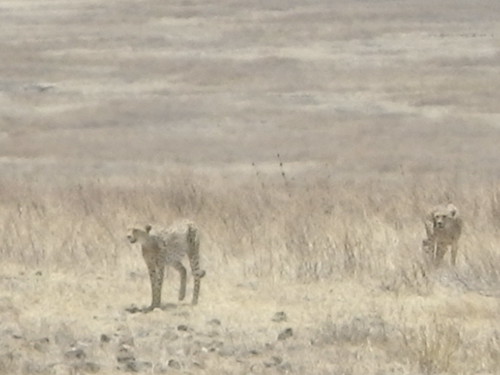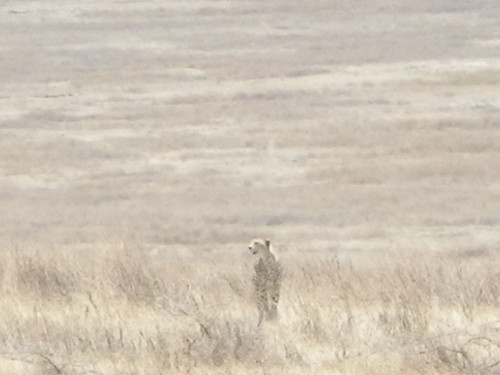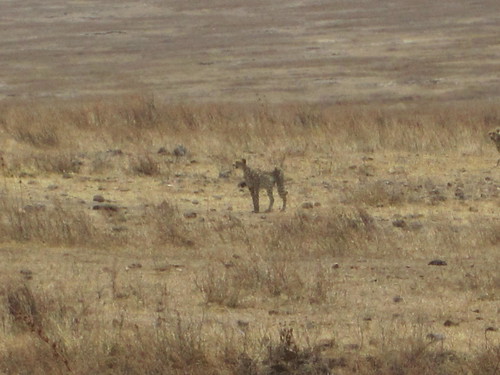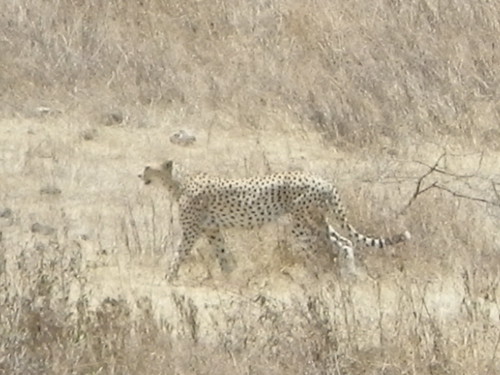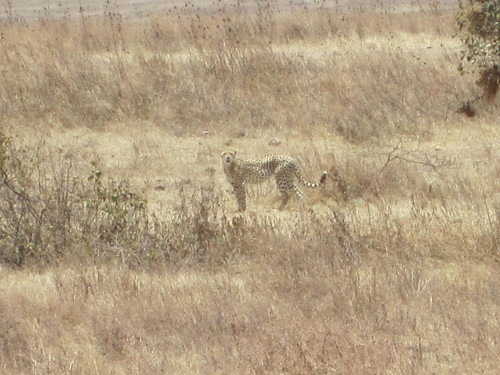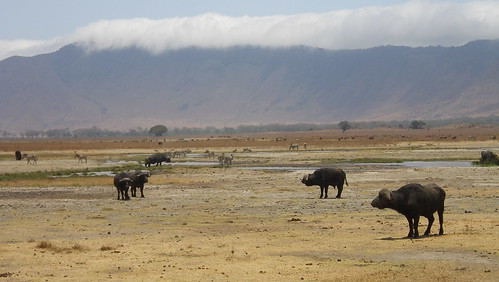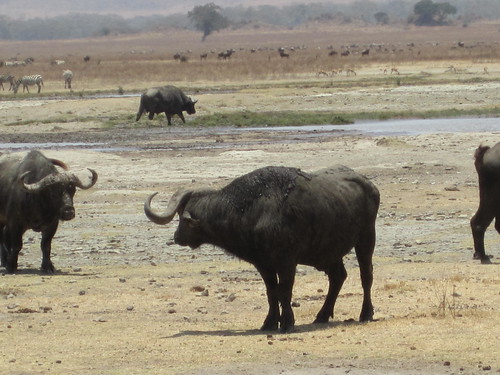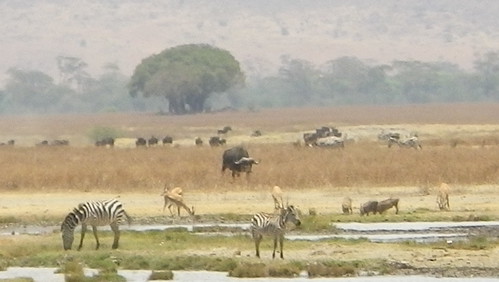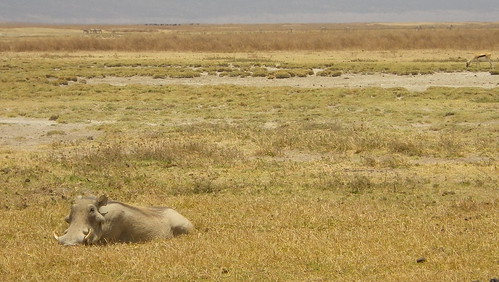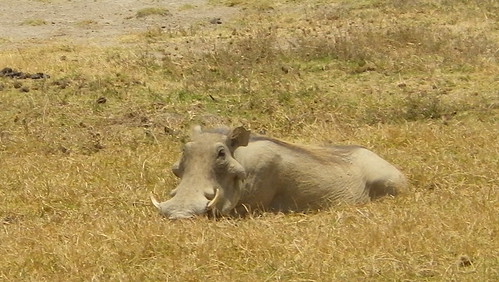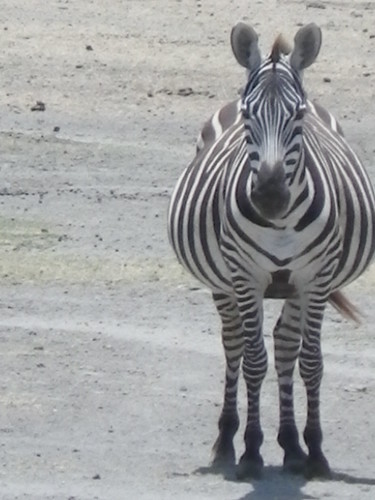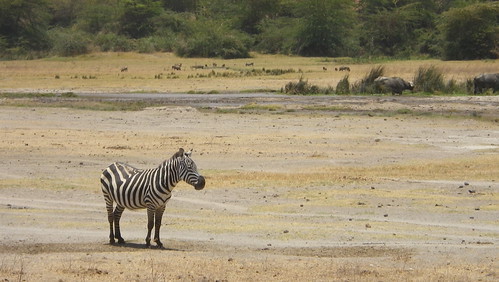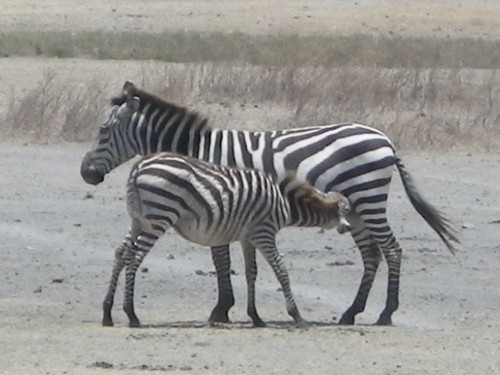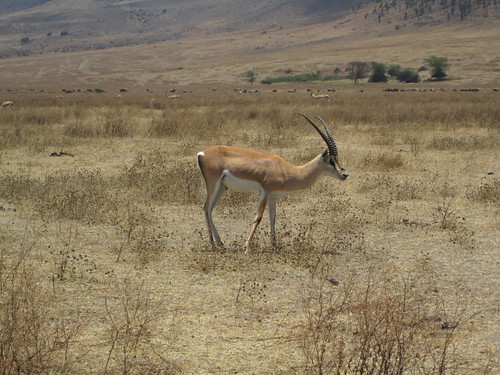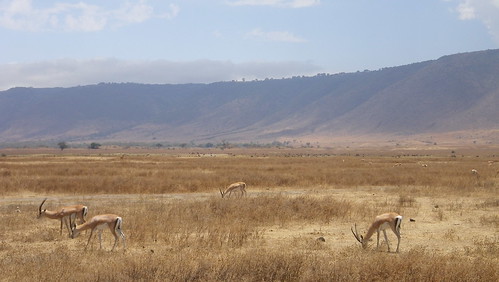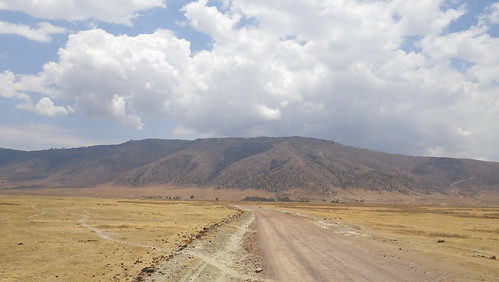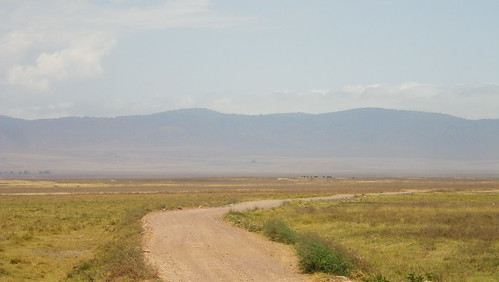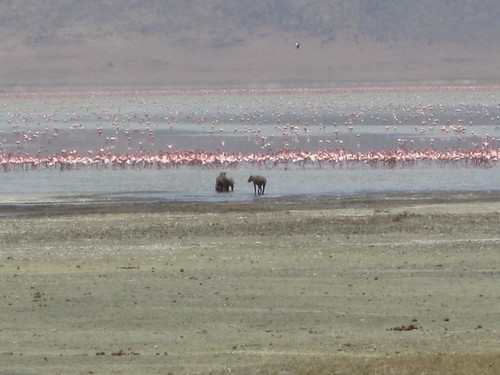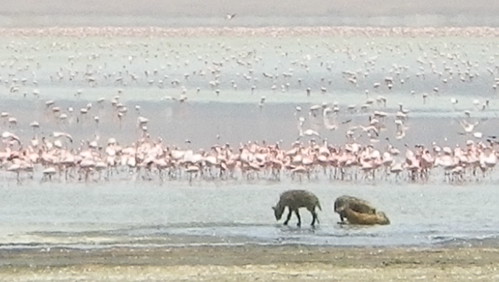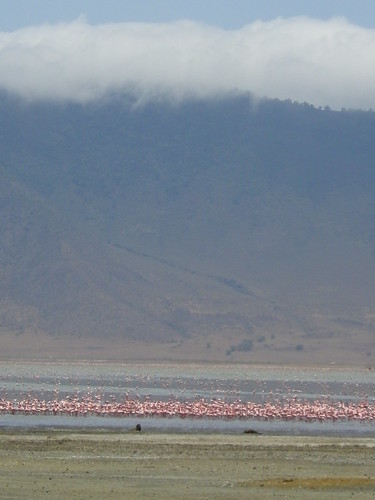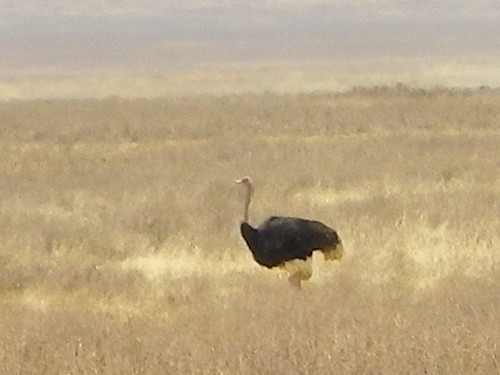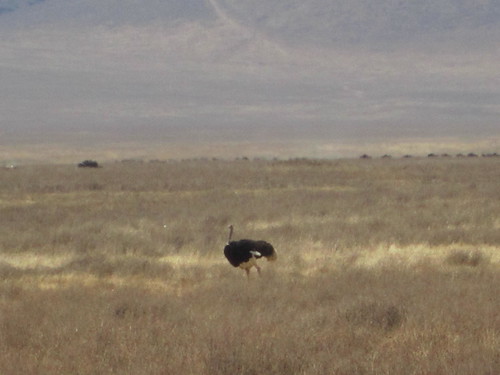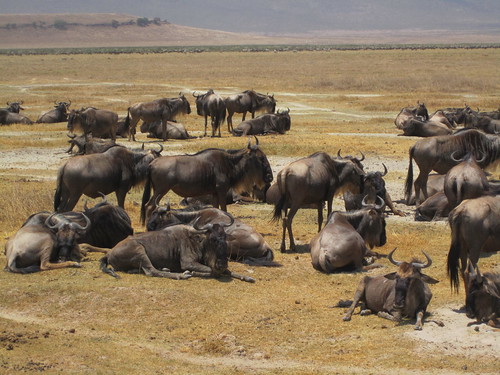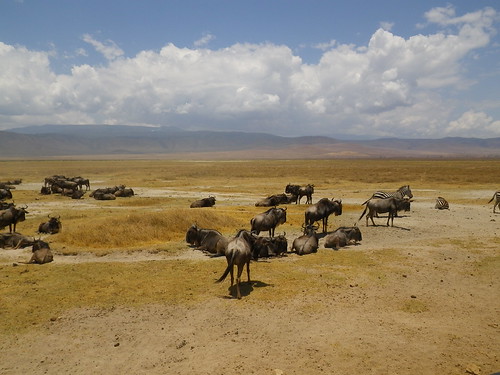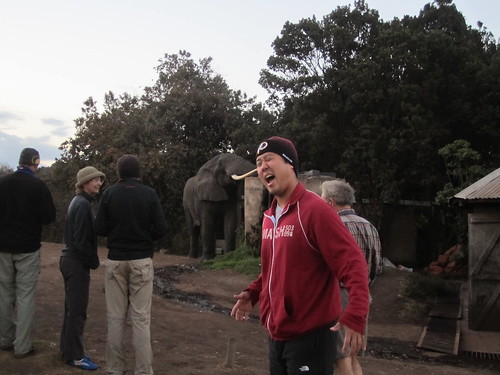
So, I'll get to the lions. But picture above is a nice segway into this week's "so you want to go to Africa" segment: safari "housing".
Being the cost-conscious travel we are, we opted for the camping option. Even in camping, there are two options: basic camping and luxury camping. Basic camping is what it sounds like: camping in tents in campgrounds that have facilities roughly comparable to what you would find in a national park in the states. We toyed around with luxury camping, but it was quite a bit more expensive, and if you google "luxury" camping, you can see why. The tents in luxury camping are pretty much like the Perkin's tent in Harry Potter #4 where everyone stays for the cribbage World Cup, i.e., a tent in name only.
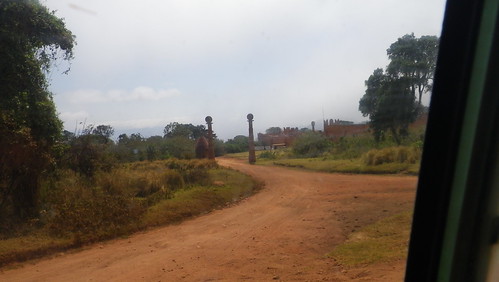

The pictures above are opposite sides of the same lodge, one from the "backside" road and one from the "rimside" of the crater. I mention it because David told us it was the most expensive lodge in... well, I can't remember exactly how big a geographic area, but definitely around the crater. It's around a $1,000 dollars a night. Now, before you say, "what a waste of money," I would like to point out that you get your own servant. As in, your OWN SERVANT. Not one for the room, not servants like a cook here, a waiter there, and a bell hop elsewhere, but your own personal servant. You wake up, and they are waiting in your room, having drawn a bath, towel in hand, and toothpaste on your toothbrush. When you eat in the dining room, each patron has their servant standing behind them, and all the servants serve everyone's food in unison. When you go to bed, they make sure to fluff your pillows and tuck you in before leaving for the evening.
Yeah, I found it really creepy also, and David said most Americans do as well. Not so with the Europeans, particularly the French and British, who he says take it as a given. Takes the meaning of aristocrat to a whole new level.
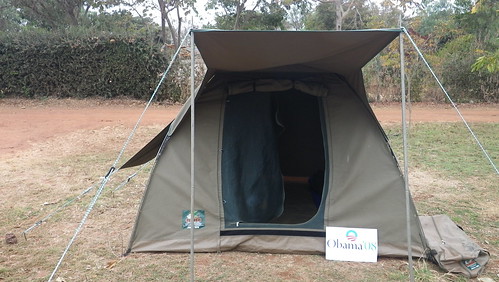
My bosses on the campaign in Iowa used to say "yard signs can't vote." I think, however, that even they agree this is a prudent use.

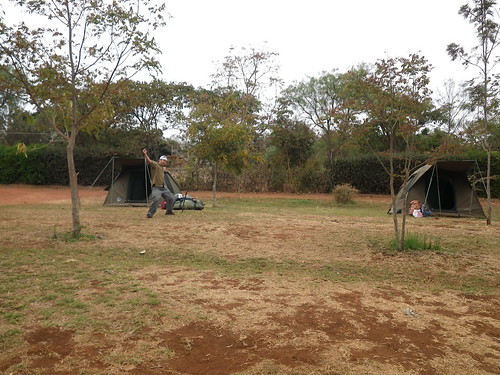
The tents were made of a heavy canvas, and quite roomy. We had two tents, one for us boyz, and one for Resha, and the one William and I shared had plenty of space for us to sleep and store our stuff. We could even stand in them and hang up clotheslines.
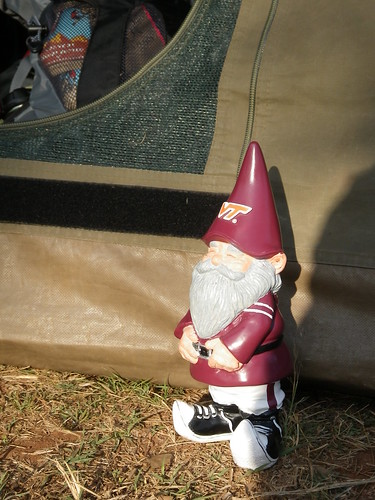
This is the first appearance of the gnome. During our planning, we all decide to take "mascots" that we were going to take pictures with on top of Kili. This is the Hokster, the Virginia Tech gnome William brought. The others will make their appearances in due course.
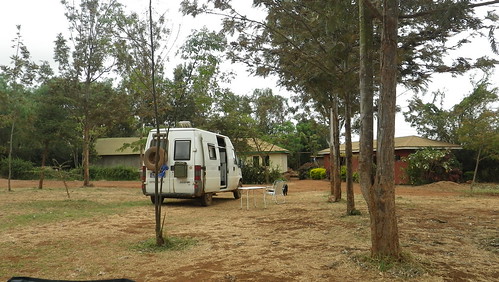
This van was at our first campsite after Lake Manyara. These people drove it down from Europe (specifically Austria) to go on safari. David said they are quite common, and I believe him, as my friend Sergey is doing exactly that now, driving from Capetown to Europe. Check out his blog. Lighter on the commentary, but he's an extremely talented photographer.
One interesting thing both David and Sergey told me is that it is actually illegal to drive a vehicle from Europe into Africa and then sell it. Apparently so many people used to do the Europe to Capetown trek and then sell their cars there, it completely destroyed the local auto market. So, if you drive it in to Africa, you have to drive it out.
On another side note, I asked David where he and the cook, Hans, slept. He said that most campsites had a tent or shed away from us tourists where they slept. I thought he may have been pulling our chain and maybe they weren't being treated above board, but I actually snuck around the first campsite and did indeed see where the guys slept in a three-walled concrete hut, albeit packed like sardines with other safari operators. Turns out, they like this because it allows them to shoot-the-breeze well into the night with other safari operators, who all know each other. The cooks are even crazier. I'll get into that when I talk about food later.
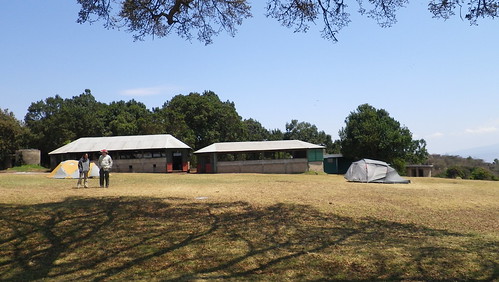
The buildings above are typical for a campground. The one on the right is a dining hall, and the one of the left is where the cooks prepare food.
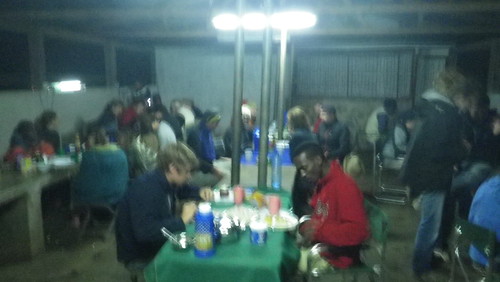

This is the inside of the dining hall, but sometimes we dined al fresco, as seen below.
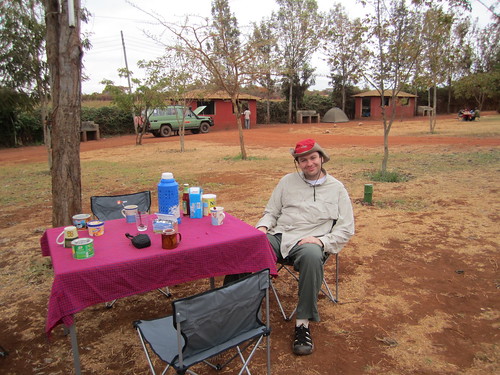
I'll cover food in a future post.
We were a bit lucky in that all of the places we camped had running water and hot showers. The one at Ngorongoro even had wall outlets, which were filled with plugs of people trying to recharge their cameras. If you go to some of the more off-the-beaten-path, you are lucky to get running water. Which brings us to funny story number one.
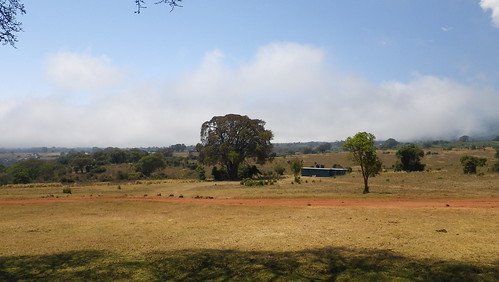
We had eaten dinner after going to the crater, and Resha needed to use the "nice" facilities (to be distinguished from the non-flushable pit toilets). It's reasonably dark at this point, and the "nice" facilities are on the other side of camp, about 200 meters away (shown above). She goes off, only to come running back yelling "pardon me chaps, but I indubitably believe that something is obstructing my way to the l'eau." I have, of course, taken the liberty to translate what she actually said into British English, and take it down a few octaves.
So, we all go wandering off the facilities, only to find several large zebras obstructing our way. Now, they weren't really doing anything, but it was still kind of freaky running into zebras, especially with their eyes glowing red from the red light emanating out of our head lamps. At first, we didn't know what to do, so we do what comes natural; attempt to go around them. This is largely successful as they do not move, but then we realize the paths are there for a reason: there is a lot of hidden zebra "dookie" outside of the paths.
Or it could have been elephants. Back to the picture at top, this monstrosity of a beast appeared in our campsite during dinner, and caused quite a buzz.
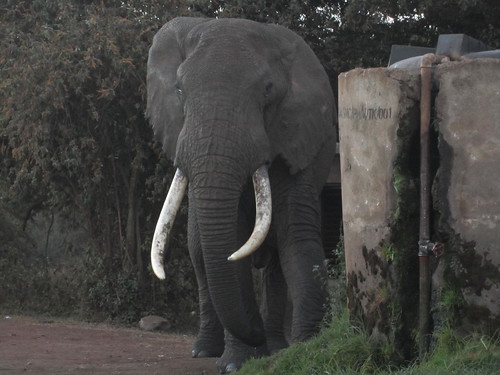


What was he doing you ask? Well, it's actually quite simple, he was really, really thirsty. The tank he is drinking from is a water tank. Since we are so high in altitude, it is necessary to provide water pressure, much like the water tanks you see in small towns in the Midwest.
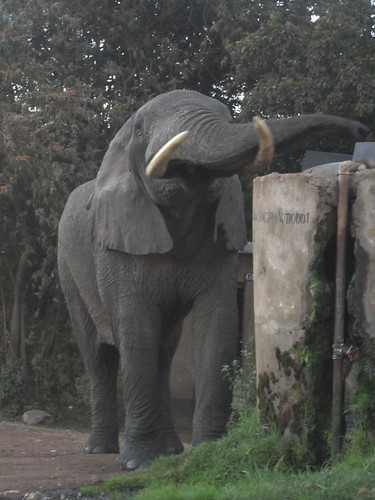
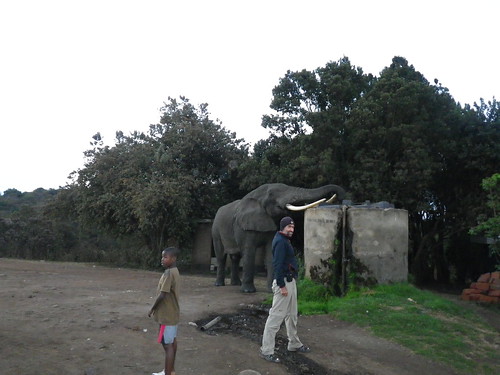
The kid on the left is the son of the only female safari driver we saw, which I guess in itself shows a bit about gender roles in Africa. I remember this was her son because she took charge of the situation when the elephant arrived, ordering everyone not to get too close, and everyone seemed to treat her with respect. Of course, it could also have been for show to let everyone know how "PC" they are.
Anyways, the Ngorongoro campsite on the crater rim was by far the most spectacular.
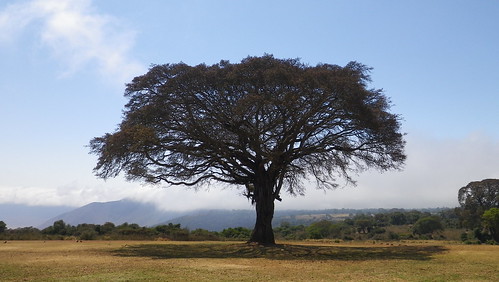
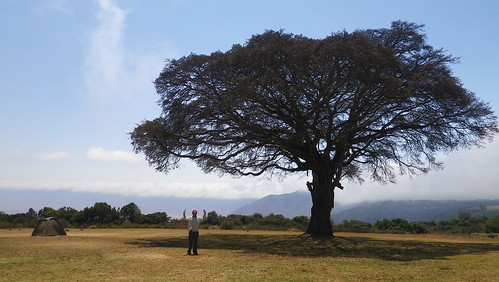

This was the tree at the center of the campsite.
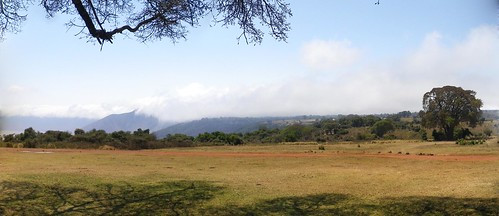
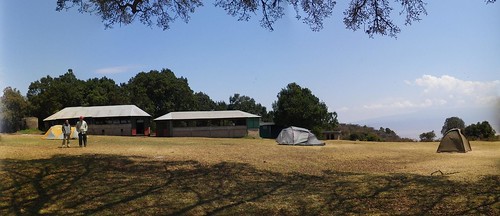

The three panoramas are the views from under the tree looking out 360.
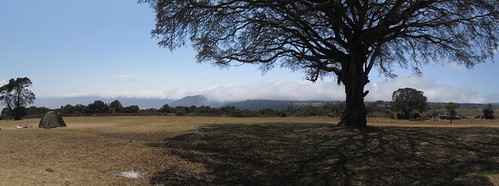
Now, as you can see, our tent is pretty exposed. Which brings me to my second story. So, Bill and I are happily sleeping away in our tent at night, after a rousing round of Uno with Resha (I won the most). We played a lot of Uno. All of sudden, we both wake up to a stampede. Of zebras.
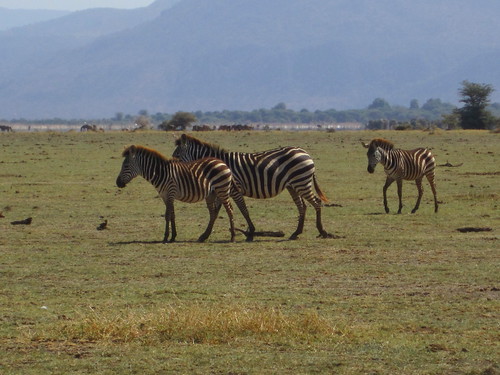
David had told us that this is common, and that the zebras "rarely" run into tent, but when you hear hooves pounding all around you and the tent canvas rattling, you don't have the most confidence. Eventually, the stampede subsided, and we went back to sleep... only to wake up a few hours later to nature's alarm clock...

... a hyena. How did we know it was a hyena you ask? Well, as I mentioned before, David's favorite animal is the hyena. One reason he likes it is because of the way it laughs, or as he puts it, saying "are yooooooooou sleeping?" Anyways, we all woke up to that distinct laugh which, all of us being engineers, were able to triangulate to just outside of our tent. Okay, maybe that was an exaggeration, but not by much. This time, still being jet-lagged and all, we did not go back to sleep, and just sat in our tents staring at the ceiling, hoping hyenas don't like enclosed spaces... or human flesh. I guess the hyena got bored, because we then heard the laughing stop, and a rustling as he (or she) moved on.
Which brings us to my final (and favorite) camping story.
We are at our final campground a day later, and it's a pretty basic campground in the middle of the bush right outside of the gates of Tarangire. Unlike the other campsites, however, it's situated reasonably close to a village and does not have walls, with only a flimsy brush fence surrounding it. Aside from having driven through it, you could also tell it was close to a village because there was a bar/club down the street playing music well into the night. If we weren't so beat, we would have gone over.
Anyways, because I guess it was so exposed, this campground had a guard; a Maasai warrior.
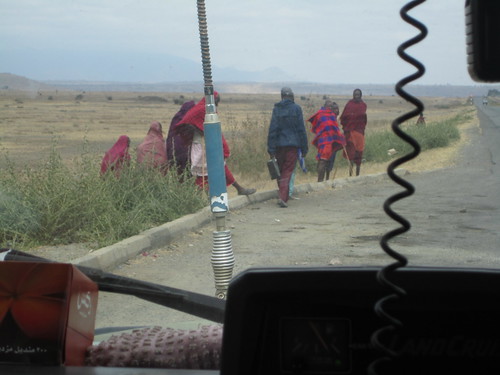
They are the ones with the poles. For a guy who guards a campground regularly and probably sees a lot of tourists like us, he was really shifty and awkward. Or maybe that's just how they are. When we were walking back to our tents from the dining hall, Resha almost ran into him, as he was just hanging out among some trees, not making a sound. We stopped when we saw him, not knowing really what to say, and I guess he sensed our awkwardness, so he backed away.
Later, William goes to the bathroom to brush his teeth. As he is happily brushing and flossing, he looks in the mirror and, without a sound, sees that the Maasai warrior has entered the bathroom (to be fair, the bathroom only has three walls and the guy is standing outside of the "fourth" wall) and is staring at the back of William's head. At this point, William just keeps brushing because, well, what else is he going to do. So, he tries to play it off and just act normal, but the guy is still just staring at him without moving, and the thought does cross his mind of "is he going to send that spear he is holding into the back of my head?" Anyways, William finishes everything up and is contemplating how to leave, when the Maasai warrior says "hakuna matata." Sensing a friendly opening to engage, William then turns quickly around to acknowledge him, only to find that he is gone, again without making a sound.
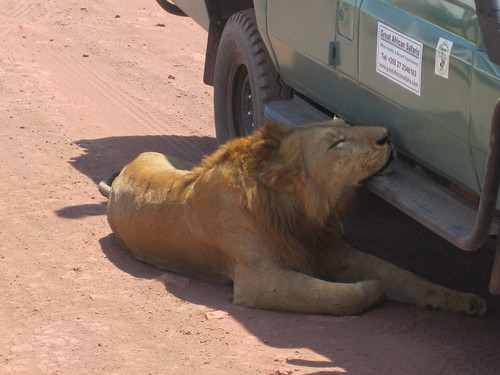
Like this guy, I am getting kind of sleepy, so I promise I will write about the lions in next week's post. Until then, same bat time, same bat channel...
